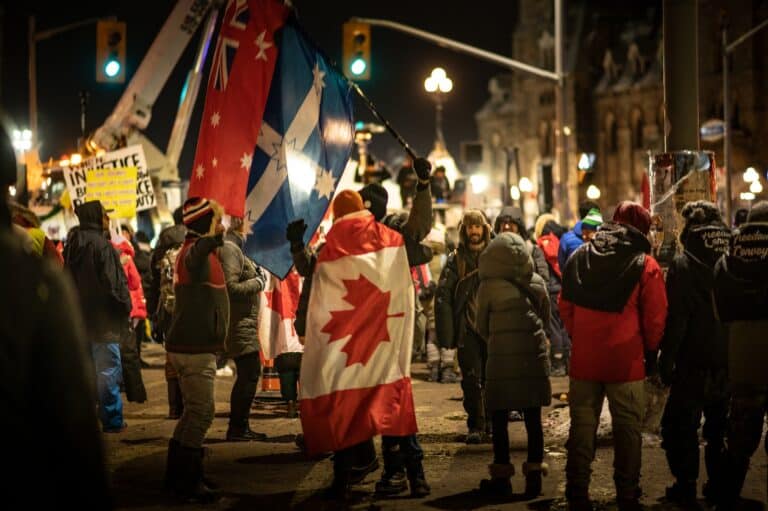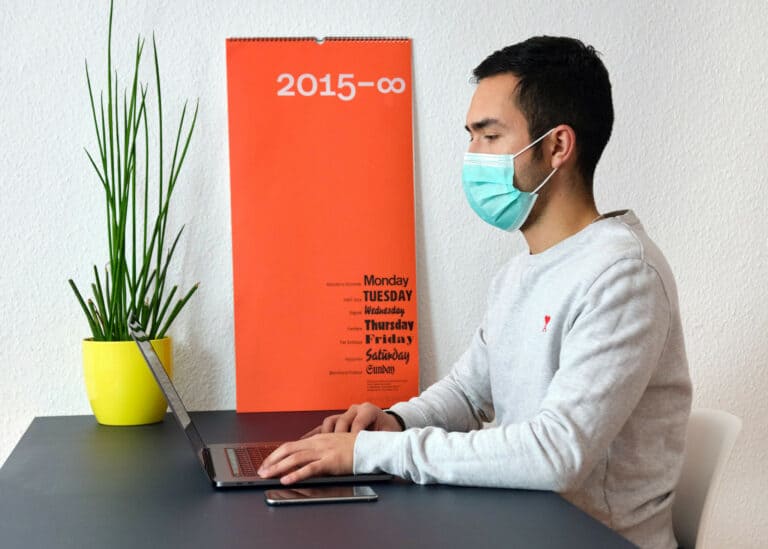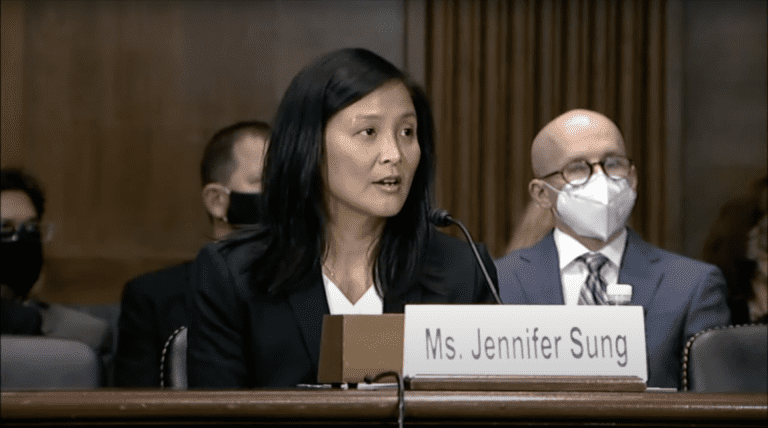Buried on page 524 of the recent Coronavirus Aid, Relief and Economic Security (CARES) Act was a small provision with big implications: mid-sized businesses that accept a stimulus loan must pledge to “remain neutral in any union organizing effort for the term of the loan.” Conservative groups decried the measure, calling it “a handout to unions” and “a gem for the union bosses.” Facilitating unionization, they claimed, “has nothing to do with the current COVID-19 coronavirus outbreak.”
That assessment is wrong. As the disease has spread and the economy has slowed, organized labor has taken centerstage in the nation’s response. Unions have shown their value not only in protecting employees at individual workplaces, but also in fighting for workers—members and non-members alike—in the halls of government. Labor’s pandemic performance demonstrates the urgent need to secure its place in American society as we weather the crisis.
Workplace
Unions’ foremost role is in advocating for their members in the workplace. The protections that unions have already won through the process of collective bargaining have placed many unionized workers in a far better position than their non-union counterparts. Take the example of paid sick leave. Prior to the passage of the Families First Coronavirus Response Act (FFCRA), which expanded employees’ paid leave rights, 91 percent of unionized workers were guaranteed paid sick leave, compared to 73 percent of non-union workers. Coverage for non-union workers was scarcer in low-wage industries, such as production (68 percent), sales (64 percent), and service (58). For the lowest earners – those making less than $10.80 per hour – the rate was a mere 31 percent. Health care is another prime example. The country’s failing insurance regime has entered the spotlight as some COVID-19 patients eschew hospitalization out of fear of insurmountable costs. Union members are far less likely to be among them. As of March 2019, 95 percent of unionized workers had access to an employer-provided healthcare plan, compared to only 68 percent of non-union workers.
The union advantage is not limited to the four corners of collective bargaining agreements. As the crisis has unfolded, unions have played a key role in negotiating additional protections for essential workers at acute risk. Organizing through National Nurses United, nurses at the University of Southern California’s Keck Hospital secured pay guarantees for RNs exposed to COVID-19 at work and a 1:1 staffing ratio goal for COVID-19 patients. When nurses at Kaiser hospitals were warned they would face discipline for wearing personally-supplied protective equipment, they successfully fought back through their union. Meanwhile, the United Food and Commercial Workers obtained substantial pay and benefit increases for 60,000 meatpacking and food processing workers and many thousands of grocery and pharmacy workers. Those increases constitute a risk premium and insure against future unemployment.
For workers facing layoffs, unions have helped ease some of the pain. The Hotel Trades Council, the union for hotel workers in New York and New Jersey, won continued health coverage for many of its members, nearly 90 percent of whom are currently laid off. At universities like MIT and Harvard, unionized dining service workers have fought for and attained pay guarantees through the end of the semester.
To be sure, unions have not succeeded at every turn. Plenty of unionized workers have been laid off with minimal or no safety net. But even when unions have exhausted their bargaining role, they have activated another function: service provision. As laid-off workers navigate arcane unemployment insurance and other benefits systems, unions are providing members with instructions and hands-on assistance. UNITE HERE Local 11 in Southern California started its own food bank for workers, and a number of unions have launched private relief funds to support members and their families. In ensuring supports for workers both before the current crisis and in its wake, the labor movement has demonstrated the “union difference” in the workplace.
Politics
The coronavirus response has showcased organized labor’s dual role in American life: unions engage not only in workplace bargaining, but also in politics. When unions do politics, they work first and foremost on behalf of their members. But at their best, they also serve as a voice for working people more generally. Unions’ political engagement in recent weeks illustrates both roles.
As Congress convened to develop a stimulus plan, labor joined the chorus of organized groups seeking benefits out of the deal. The breakdown of worker gains from the CARES Act might be read, at least in part, as a reflection of union power. Consider the example of the heavily unionized airline industry. While airlines were always set to receive a large share of the stimulus, transportation unions insisted that workers receive a substantial part of the package. Sara Nelson, president of the Association of Flight Attendants-CWA, helped bring House Democrats on board to a framework that ensured grants to airlines would go directly to employee payroll. That proposal made it into the final Senate bill: in exchange for $25 billion in aid, airlines will need to pay workers through September 30 without abrogating the terms of union contracts. Compare the result for airline workers to that of workers in the nearly union-free restaurant industry. Those employers will be able to access loans that can be forgiven if they keep workers on payroll, but only for 8 weeks.
Still, unions have exerted pressure on lawmakers to prioritize support for all workers in responding to the crisis. The AFL-CIO and other labor groups advocated strongly for the paid leave provisions of the FFCRA and the unemployment insurance and payroll protection provisions of the CARES Act, sections of the law that broadly benefit working families. At the state and local level, their efforts are ongoing. In Florida, a coalition of labor groups has called on the state to overhaul its unemployment insurance system. In Philadelphia, unions are organizing toward a coronavirus relief fund that would benefit low-wage workers regardless of union membership. Unions have also been a firm voice in resisting corporate welfare. They fought to tie federal assistance to businesses in the CARES Act to executive pay caps and limits on stock buybacks, and they continue to champion stronger restraints. While corporations have a big say in Washington and state capitals, unions have given working people, unionized or not, a seat at the table.
Implications
With union power on full display, non-union workers have started to organize. In just the past week, Instacart workers went on strike to demand protective equipment and pay increases, Amazon warehouse workers walked off the job at an unsafe facility in Staten Island, and Whole Foods workers took part in a nationwide “sick out.”
In exceptional times, employers have responded with the standard playbook. Amazon promptly terminated the lead organizer of the Staten Island protest. Everlane, the clothing retailer, fired customer service staff a week after their union asked for voluntary recognition. Trader Joe’s circulated a memo to store managers urging them to dissuade employees from unionizing.
These conventional tactics ignore the pandemic’s urgent lessons about what unions do. Now more than ever, stifling organizing threatens our ability to sustain a fair and equitable society. Given this context, the CARES Act’s protections for unions are not pork, but smart and essential policy.










Daily News & Commentary
Start your day with our roundup of the latest labor developments. See all
April 22
DOL and EEOC beat the buzzer; Striking journalists get big NLRB news
April 21
Historic unionization at Volkswagen's Chattanooga plant; DOL cracks down on child labor; NY passes tax credit for journalists' salaries.
April 19
Alabama and Louisiana advance anti-worker legislation; Mercedes workers in Alabama set election date; VW Chattanooga election concludes today.
April 18
Disneyland performers file petition for unionization and union elections begin at Volkswagen plant in Tennessee.
April 18
In today’s Tech@Work, a regulation-of-algorithms-in-hiring blitz: Mass. AG issues advisory clarifying how state laws apply to AI decisionmaking tools; and British union TUC launches campaign for new law to regulate the use of AI at work.
April 17
Southern governors oppose UAW organizing in their states; Florida bans local heat protections for workers; Google employees occupy company offices to protest contracts with the Israeli government